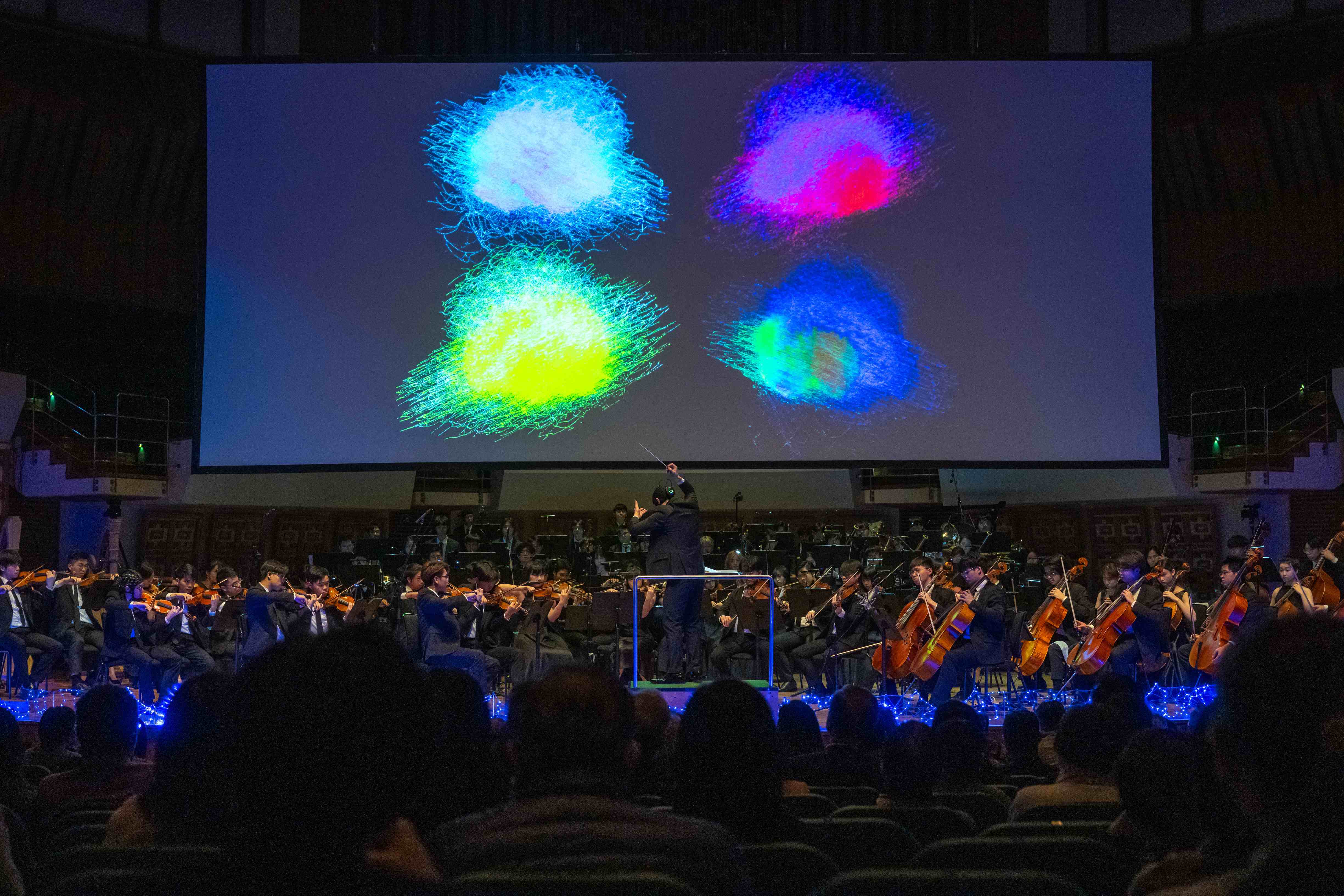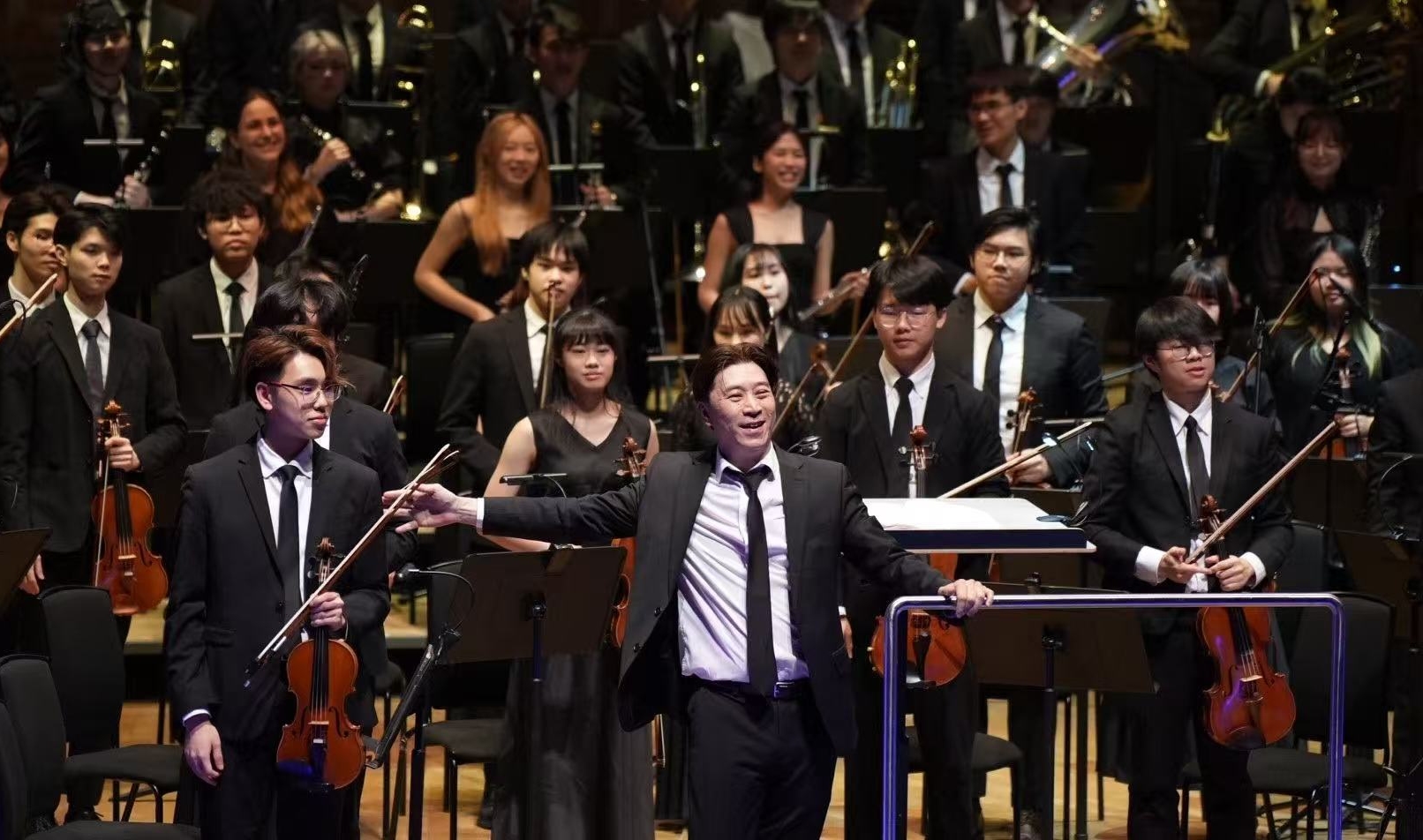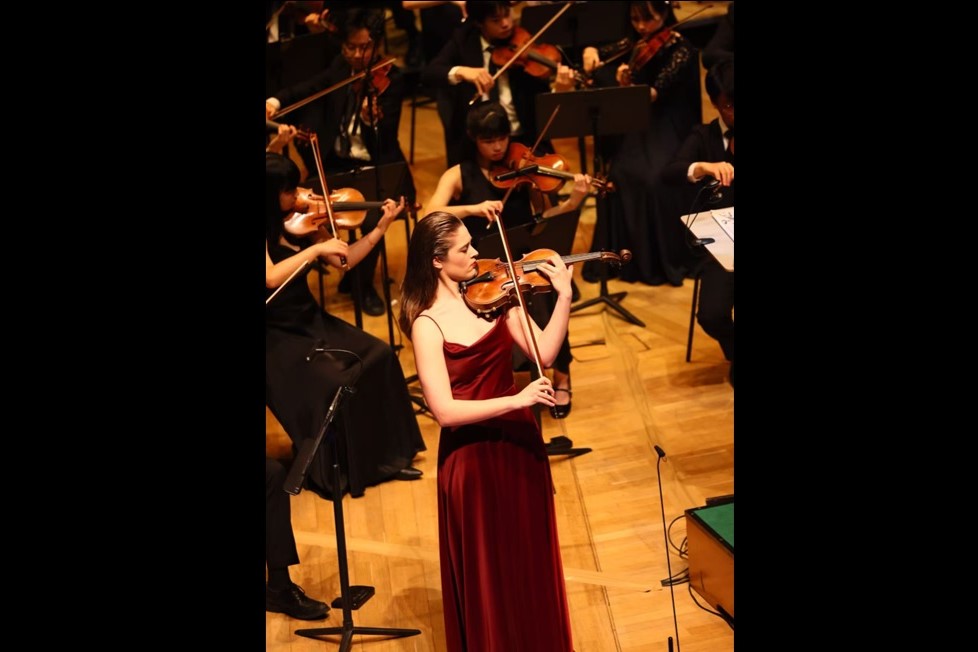Press Release
HKBU Symphony Orchestra holds Annual Gala Concert showcasing the blending of music and brainwave technology
Wednesday, 2 April 2025
Hong Kong Baptist University (HKBU) Symphony Orchestra held its Annual Gala Concert yesterday (1 April) at the Hong Kong Cultural Centre Concert Hall, where an enchanting performance invited nearly 1,200 audience members on a musical odyssey through classical virtuosity, choral harmony, technological innovation, and emotional resonance.
As a pioneer in the transdisciplinary study of musical creativity, HKBU took the laboratory to the concert hall this year and themed it to uniquely bridge music and brainwave technology. With the use of portable functional Near-Infrared Spectroscopy (fNIRS) devices, real-time monitoring utilising near-infrared light detected different levels of blood oxygenation in the players’ brain tissues while they played Gustav Mahler’s Symphony No.1 in D major, IV. Stürmisch beweget. The state-of-the-art technology created a singular musical experience for the audience by capturing the brain activity of the performers and translating these brainwave patterns into fluid images via artificial intelligence. It was an extraordinary synthesis between art and neuroscience. This method has the advantage that performers can fully immerse themselves in a natural musical performance environment to conduct a comprehensive study.
Through these subtle yet innovative integrations, the concert elevated the audience’s visual and emotional experience while remaining deeply rooted in the timeless beauty of classical and choral traditions. The result was a rich, immersive performance that explored the deep connection between sound and the complex functions of the human mind, as well as resonated deeply with both heart and intellect, redefining the boundaries of what art could be.
The concert was conducted by Professor Johnny M Poon, Associate Vice-President (Interdisciplinary Research), Founding Dean of the School of Creative Arts and Dr Hung Hin Shiu Endowed Professor in Music at HKBU. Featured artist and rising Spanish violinist Raquel Areal Martínez performed Max Bruch’s emotive and technically demanding Violin Concerto No.1 in G minor, Op.26. The piece moved from a stirring first movement to a deeply expressive adagio and a dynamic finale that showcased Ms Martínez’s technical mastery.
Adding to the evening’s allure, HKBU’s chamber choir, Cantoría Hong Kong, presented Johannes Brahms’ Warum ist das Licht gegeben dem Mühseligen?, Op.74, No.1, and Arnold Schoenberg’s Friede auf Erden, Op.13. The concert also performed Leonard Bernstein’s classic operetta Overture to Candide.
- End -


